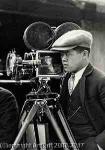James Howe
James Howe
Born: 1946
Biography:
Wong Tung Jim, A.S.C. and Hud (1963). He was selected as one of the ten most influential cinematographers in a survey of the members of the International Cinematographers Guild. On May 25, 2018, Google honored Howe with a doodle on its homepage.
Howe was born Wong Tung Jim in Taishan, Canton Province, China in 1899. His father Wong Howe moved to America that year to work on the Northern Pacific Railway and in 1904 sent for his family. The Howes settled in Pasco, Washington, where they owned a general store. A Brownie camera, said to have been bought at Pasco Drug (a now-closed city landmark) when he was a child, sparked an early interest in photography. After his father's death, the teenaged Howe moved to Oregon to live with his uncle and briefly considered (1915–16) a career as a bantamweight boxer. After compiling a record of 5 wins, 2 losses and a draw, Howe moved to the San Francisco Bay Area in hopes of attending aviation school but ran out of money and went south to Los Angeles. Once there, Howe took several odd jobs, including work as a commercial photographer's delivery boy and as a busboy at the Beverly Hills Hotel. After a chance encounter with a former boxing colleague who was photographing a Mack Sennett short on the streets of Los Angeles, Howe approached cinematographer Alvin Wyckoff and landed a low-level job in the film lab at Famous Players-Lasky Studios. Soon thereafter he was called to the set of The Little American to act as an extra clapper boy, which brought him into contact with silent film director Cecil B. DeMille. Amused by the sight of the diminutive Asian holding the slate with a large cigar in his mouth, DeMille kept Howe on and launched his career as a camera assistant. To earn additional money, Howe took publicity stills for Hollywood stars.
One of those still photographs launched Howe's career as a cinematographer when he stumbled across a means of making silent film star Mary Miles Minter's eyes look darker by photographing her while she was looking at a dark surface. Minter requested that Howe be first cameraman, that is director of photography, on her next feature, and Howe shot Minter's closeups for Drums of Fate by placing black velvet in a large frame around the camera. Throughout his career, Howe retained a reputation for making actresses look their best through lighting alone and seldom resorted to using gauze or other diffusion over the lens to soften their features. Howe worked steadily as a cinematographer from 1923 until the end of the era of silent film.
In 1928, Howe was in China shooting backgrounds for a movie he hoped to direct. The project he was working on was never completed (although some of the footage was used in Shanghai Express), and when he returned to Hollywood, he discovered that the "talkies" had largely supplanted silent productions. With no experience in that medium, Howe could not find work. To reestablish himself, Howe first co-financed a Japanese-language feature shot in Southern California entitled Chijiku wo mawasuru chikara (The Force that Turns the Earth around its Axis), which he also photographed and co-directed. When that film failed to find an audience in California's nisei communities or Japan, Howe shot the low-budget feature Today for no salary. Finally, director/producer Howard Hawks, whom he had met on The Little American, hired him for The Criminal Code and then director William K. Howard selected him to be the cinematographer on Transatlantic.
Howe's innovative work on Transatlantic reestablished him as one of the leading cinematographers in Hollywood, and he worked continuously through the 1930s and 1940s, generally on several movies a year. Howe gained a reputation as a perfectionist who could be difficult to work with, often overruling and even berating other members of the film crew. In a 1945 issue of The Screen Writer, Howe stated his views of a cameraman's responsibility, writing in The Cameraman Talks Back that " he cameraman confers with the director on: (a) the composition of shots for action, since some scenes require definite composition for their best dramatic effect, while others require the utmost fluidity, or freedom from any strict definition or stylization; (b) atmosphere; (c) the dramatic mood of the story, which they plan together from beginning to end; (d) the action of the piece." Howe's broad view of a cinematographer's responsibilities reflected those established for first cameramen in silent films and continued through the studio era where most directors were also contract employees mainly in charge of actor performances.
More...














